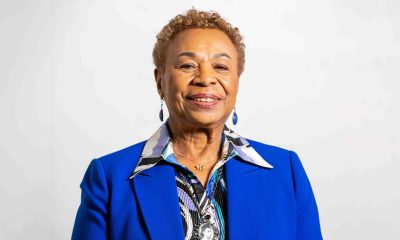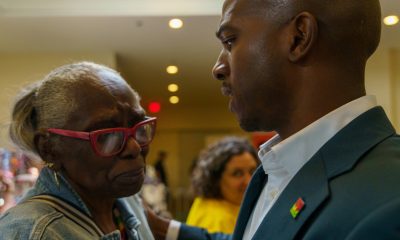Bay Area
Future Housing Sites on Agenda for March 1
“Residents in the local workforce struggle to find suitable affordable housing close to their Marin jobs, which leads to longer commutes, negatively affects the environment, and erodes quality of life,” said CDA Deputy Director Leelee Thomas. “We see this as a chance to make marked progress with racial and social equity. At this stage, we are asking our residents to participate in this process and help us identify places where we can add housing within our communities.”

County prepares to update long-term plans to meet needs and state mandates
Courtesy of Marin County
A master list of all potential locations in unincorporated Marin County that are under consideration as future housing sites will be the subject of online-only meetings on March 1 and March 15.
The Board of Supervisors and Planning Commission, which are co-hosting the meetings, will then select sites to be evaluated in an upcoming Housing Element environmental review. During the March meetings, members of the two governing bodies could direct County staff to narrow down the list by eliminating some eligible locations.
Both joint sessions of the Board and Planning Commission will be held as 5 p.m. videoconferences only because of the topic’s high interest in unincorporated neighborhoods and the need to prevent large crowds from congregating because of the COVID-19 virus. The Civic Center’s Board chamber will be closed.
That session will be a follow-up to Dec. 7 and Feb. 1 joint meetings between the two bodies at which staff from the Marin County Community Development Agency (CDA) presented details about the Housing and Safety Elements, which are required plans to accommodate future housing needs and address climate change. Staff has been hosting community meetings throughout the unincorporated county to share information on candidate sites and gather feedback, which will be shared with the Board and Planning Commission.
“Residents in the local workforce struggle to find suitable affordable housing close to their Marin jobs, which leads to longer commutes, negatively affects the environment, and erodes quality of life,” said CDA Deputy Director Leelee Thomas. “We see this as a chance to make marked progress with racial and social equity. At this stage, we are asking our residents to participate in this process and help us identify places where we can add housing within our communities.”
The County has been directed to plan for at least 3,569 new housing units in unincorporated areas during the eight-year cycle that begins in 2023. Those must be distributed among all income categories, from extremely low to above moderate. Parcels have been identified as potential housing sites in all areas of the unincorporated county. Land owned by schools, houses of worship, businesses, nonprofits, private owners and the county government is all open for consideration. While housing is allowed in almost all local zoning districts, including commercial, the update to the Housing Element will increase the maximum number of homes allowed in some areas.
The consequences of noncompliance with housing requirements could be stiff. If a jurisdiction does not meet its housing goals, it becomes ineligible for state funding to serve local transportation needs and may be subject to statewide streamlining rules, which allow for housing development with limited public review process. California Department of Housing and Community Development (HCD) has a new division that is designed to enforce accountability with plans to meet housing needs.
“It behooves us to listen, collaborate, and come with our own locally designed plan rather than risking state reprimand and losing local control on decisions,” Thomas said.
The Housing Element, along with the accompanying Safety Element, needs to be completed by the end of 2022 so it can be submitted to the State of California for approval. This winter, CDA staff is engaging in community discussions, speaking at local homeowners association meetings and design review boards. Three online tools are being used to encourage residents to provide feedback on where housing could be located.
Balancing Act allows residents to select sites on a virtual map and watch the allocation numbers change as allotments are distributed from location to location.
Atlas allows users to see the potential housing sites and how they relate to information such as population density, environmental constraints, and equity data.
The site suggestion map allows the public to suggest a site that is not already on the candidate list. It also displays all candidate sites for public comment.
“Our outreach has received positive feedback, and several thousand people have visited the Balancing Act website,” said CDA Senior Planner Jillian Nameth Zeiger. “The meetings with design review boards and other community organizations have allowed us to describe the process, answer questions, and gather a lot of public comment that will be reported back to the Board of Supervisors and Planning Commission. We have more sites on the candidate list than we need for the plan, so we are looking to the public for guidance on where they think we should be planning for more housing. Balancing Act, public comment at meetings, phone calls, and emails are great ways to get involved.”
Questions and comments can be emailed to staff and phone inquiries can be made to (415) 473-6269. Regular updates can be found on the Housing and Safety Elements update webpage.
Activism
Big God Ministry Gives Away Toys in Marin City
Pastor Hall also gave a message of encouragement to the crowd, thanking Jesus for the “best year of their lives.” He asked each of the children what they wanted to be when they grow up.

By Godfrey Lee
Big God Ministries, pastored by David Hall, gave toys to the children in Marin City on Monday, Dec. 15, on the lawn near the corner of Drake Avenue and Donahue Street.
Pastor Hall also gave a message of encouragement to the crowd, thanking Jesus for the “best year of their lives.” He asked each of the children what they wanted to be when they grew up.
Around 75 parents and children were there to receive the presents, which consisted mainly of Gideon Bibles, Cat in the Hat pillows, Barbie dolls, Tonka trucks, and Lego building sets.
A half dozen volunteers from the Big God Ministry, including Donnie Roary, helped to set up the tables for the toy giveaway. The worship music was sung by Ruby Friedman, Keri Carpenter, and Jake Monaghan, who also played the accordion.
Big God Ministries meets on Sundays at 10 a.m. at the Mill Valley Community Center, 180 Camino Alto, Mill Valley, CA Their phone number is (415) 797-2567.
Activism
First 5 Alameda County Distributes Over $8 Million in First Wave of Critical Relief Funds for Historically Underpaid Caregivers
“Family, Friend, and Neighbor caregivers are lifelines for so many children and families in Alameda County,” said Kristin Spanos, CEO, First 5 Alameda County. “Yet, they often go unrecognized and undercompensated for their labor and ability to give individualized, culturally connected care. At First 5, we support the conditions that allow families to thrive, and getting this money into the hands of these caregivers and families at a time of heightened financial stress for parents is part of that commitment.”

Family, Friend, and Neighbor Caregivers Can Now Opt Into $4,000 Grants to Help Bolster Economic Stability and Strengthen Early Learning Experiences
By Post Staff
Today, First 5 Alameda County announced the distribution of $4,000 relief grants to more than 2,000 Family, Friend, and Neighbor (FFN) caregivers, totaling over $8 million in the first round of funding. Over the full course of the funding initiative, First 5 Alameda County anticipates supporting over 3,000 FFN caregivers, who collectively care for an estimated 5,200 children across Alameda County. These grants are only a portion of the estimated $190 million being invested into expanding our early childcare system through direct caregiver relief to upcoming facilities, shelter, and long-term sustainability investments for providers fromMeasure C in its first year. This investment builds on the early rollout of Measure C and reflects a comprehensive, system-wide strategy to strengthen Alameda County’s early childhood ecosystem so families can rely on sustainable, accessible care,
These important caregivers provide child care in Alameda County to their relatives, friends, and neighbors. While public benefits continue to decrease for families, and inflation and the cost of living continue to rise, these grants provide direct economic support for FFN caregivers, whose wages have historically been very low or nonexistent, and very few of whom receive benefits. As families continue to face growing financial pressures, especially during the winter and holiday season, these grants will help these caregivers with living expenses such as rent, utilities, supplies, and food.
“Family, Friend, and Neighbor caregivers are lifelines for so many children and families in Alameda County,” said Kristin Spanos, CEO, First 5 Alameda County. “Yet, they often go unrecognized and undercompensated for their labor and ability to give individualized, culturally connected care. At First 5, we support the conditions that allow families to thrive, and getting this money into the hands of these caregivers and families at a time of heightened financial stress for parents is part of that commitment.”
The funding for these relief grants comes from Measure C, a local voter-approved sales tax in Alameda County that invests in young children, their families, communities, providers, and caregivers. Within the first year of First 5’s 5-Year Plan for Measure C, in addition to the relief grants to informal FFN caregivers, other significant investments will benefit licensed child care providers. These investments include over $40 million in Early Care and Education (ECE) Emergency Grants, which have already flowed to nearly 800 center-based and family child care providers. As part of First 5’s 5-Year Plan, preparations are also underway to distribute facilities grants early next year for child care providers who need to make urgent repairs or improvements, and to launch the Emergency Revolving Fund in Spring 2026 to support licensed child care providers in Alameda County who are at risk of closure.
The FFN Relief Grants recognize and support the essential work that an estimated 3,000 FFN caregivers provide to 5,200 children in Alameda County. There is still an opportunity to receive funds for FFN caregivers who have not yet received them.
In partnership with First 5 Alameda County, Child Care Payment Agencies play a critical role in identifying eligible caregivers and leading coordinated outreach efforts to ensure FFN caregivers are informed of and able to access these relief funds.FFN caregivers are eligible for the grant if they receive a child care payment from an Alameda County Child Care Payment Agency, 4Cs of Alameda County, BANANAS, Hively, and Davis Street, and are currently caring for a child 12 years old or younger in Alameda County. Additionally, FFN caregivers who provided care for a child 12 years or younger at any time since April 1, 2025, but are no longer doing so, are also eligible for the funds. Eligible caregivers are being contacted by their Child Care Payment Agency on a rolling basis, beginning with those who provided care between April and July 2025.
“This money is coming to me at a critical time of heightened economic strain,” said Jill Morton, a caregiver in Oakland, California. “Since I am a non-licensed childcare provider, I didn’t think I was eligible for this financial support. I was relieved that this money can help pay my rent, purchase learning materials for the children as well as enhance childcare, buy groceries and take care of grandchildren.”
Eligible FFN caregivers who provided care at any time between April 1, 2025 and July 31, 2025, who haven’t yet opted into the process, are encouraged to check their mail and email for an eligibility letter. Those who have cared for a child after this period should expect to receive communications from their child care payment agency in the coming months. FFN caregivers with questions may also contact the agency they work with to receive child care payments, or the First 5 Alameda help desk, Monday through Friday, from 9 a.m. to 5:00 p.m. PST, at 510-227-6964. The help desk will be closed 12/25/25 – 1/1/26. Additional grant payments will be made on a rolling basis as opt-ins are received by the four child care payment agencies in Alameda County.
Beginning in the second year of Measure C implementation, FFN caregivers who care for a child from birth to age five and receive an Alameda County subsidized voucher will get an additional $500 per month. This amounts to an annual increase of about $6,000 per child receiving a subsidy. Together with more Measure C funding expected to flow back into the community as part of First 5’s 5-Year Plan, investments will continue to become available in the coming year for addressing the needs of childcare providers in Alameda County.
About First 5 Alameda County
First 5 Alameda County builds the local childhood systems and supports needed to ensure our county’s youngest children are safe, healthy, and ready to succeed in school and life.
Our Mission
In partnership with the community, we support a county-wide continuous prevention and early intervention system that promotes optimal health and development, narrows disparities, and improves the lives of children from birth to age five and their families.
Our Vision
Every child in Alameda County will have optimal health, development, and well-being to reach their greatest potential.
Learn more at www.first5alameda.org.
Activism
Oakland Post: Week of December 24 – 30, 2025
The printed Weekly Edition of the Oakland Post: Week of – December 24 – 30, 2025

To enlarge your view of this issue, use the slider, magnifying glass icon or full page icon in the lower right corner of the browser window.
-

 Alameda County4 weeks ago
Alameda County4 weeks agoSeth Curry Makes Impressive Debut with the Golden State Warriors
-

 #NNPA BlackPress4 weeks ago
#NNPA BlackPress4 weeks agoLIHEAP Funds Released After Weeks of Delay as States and the District Rush to Protect Households from the Cold
-

 #NNPA BlackPress4 weeks ago
#NNPA BlackPress4 weeks agoSeven Steps to Help Your Child Build Meaningful Connections
-

 #NNPA BlackPress4 weeks ago
#NNPA BlackPress4 weeks agoSeven Steps to Help Your Child Build Meaningful Connections
-

 #NNPA BlackPress4 weeks ago
#NNPA BlackPress4 weeks agoTrinidad and Tobago – Prime Minister Confirms U.S. Marines Working on Tobago Radar System
-

 #NNPA BlackPress4 weeks ago
#NNPA BlackPress4 weeks agoThanksgiving Celebrated Across the Tri-State
-

 #NNPA BlackPress4 weeks ago
#NNPA BlackPress4 weeks agoTeens Reject Today’s News as Trump Intensifies His Assault on the Press
-

 #NNPA BlackPress4 weeks ago
#NNPA BlackPress4 weeks agoBreaking the Silence: Black Veterans Speak Out on PTSD and the Path to Recovery




















































